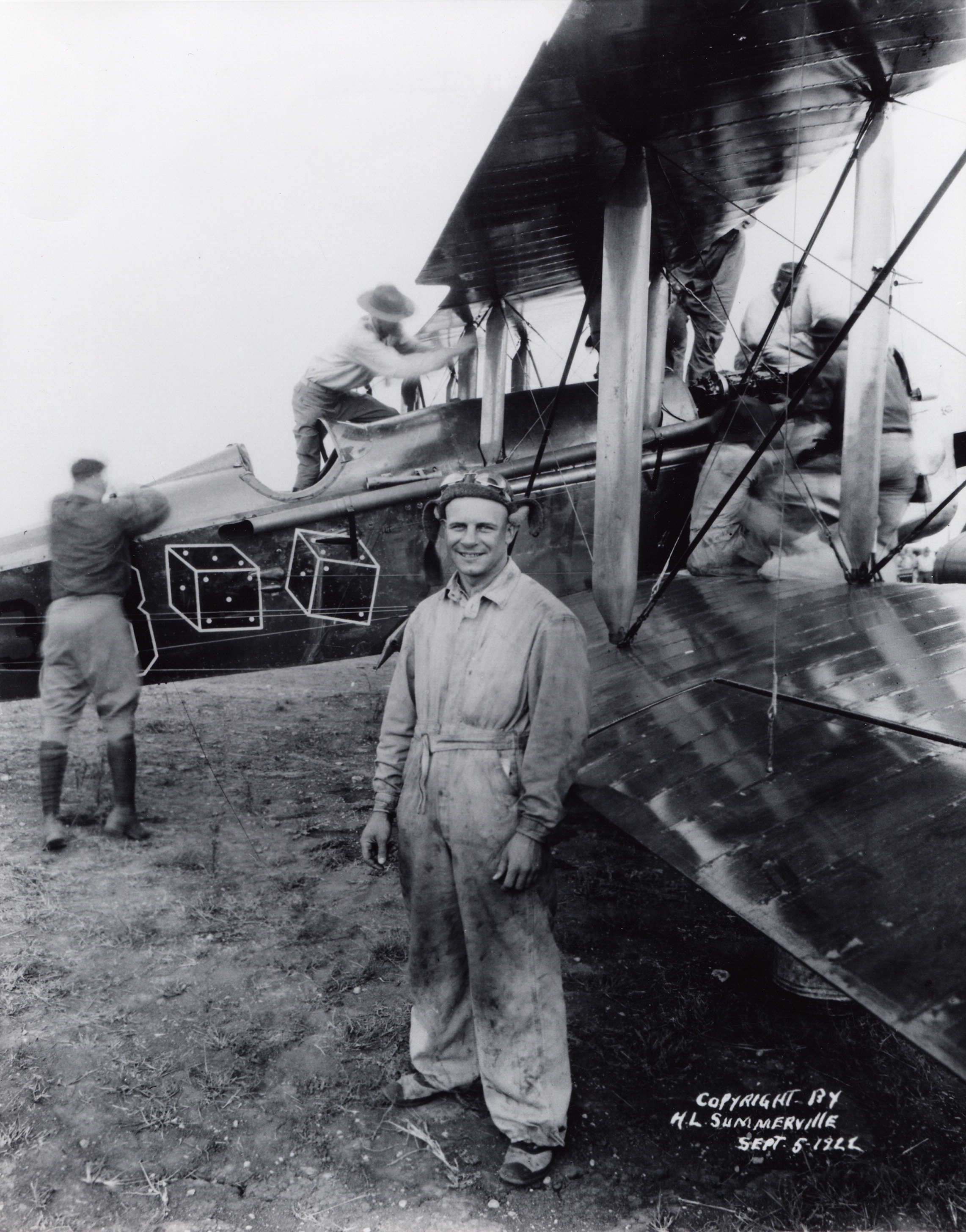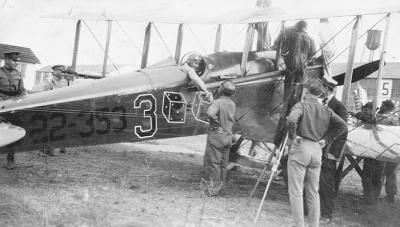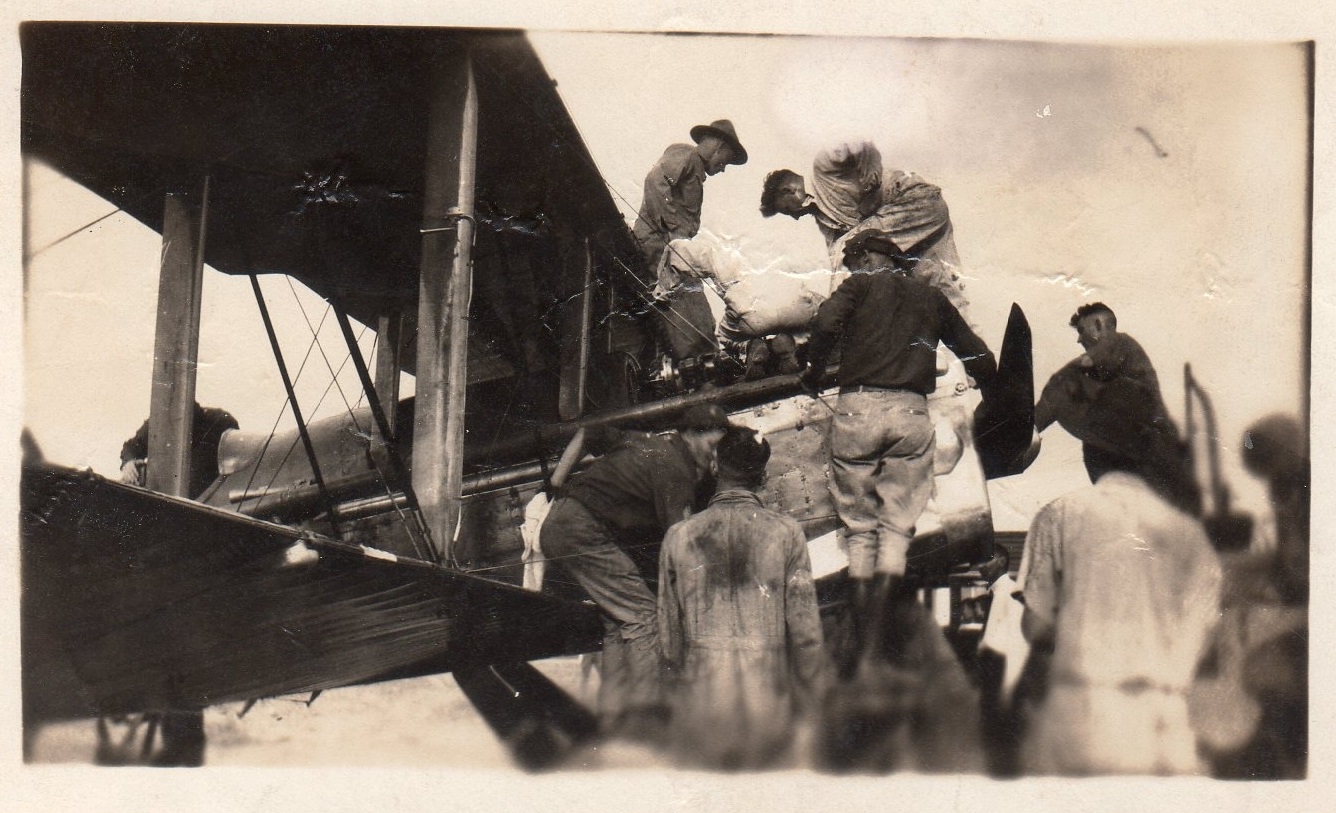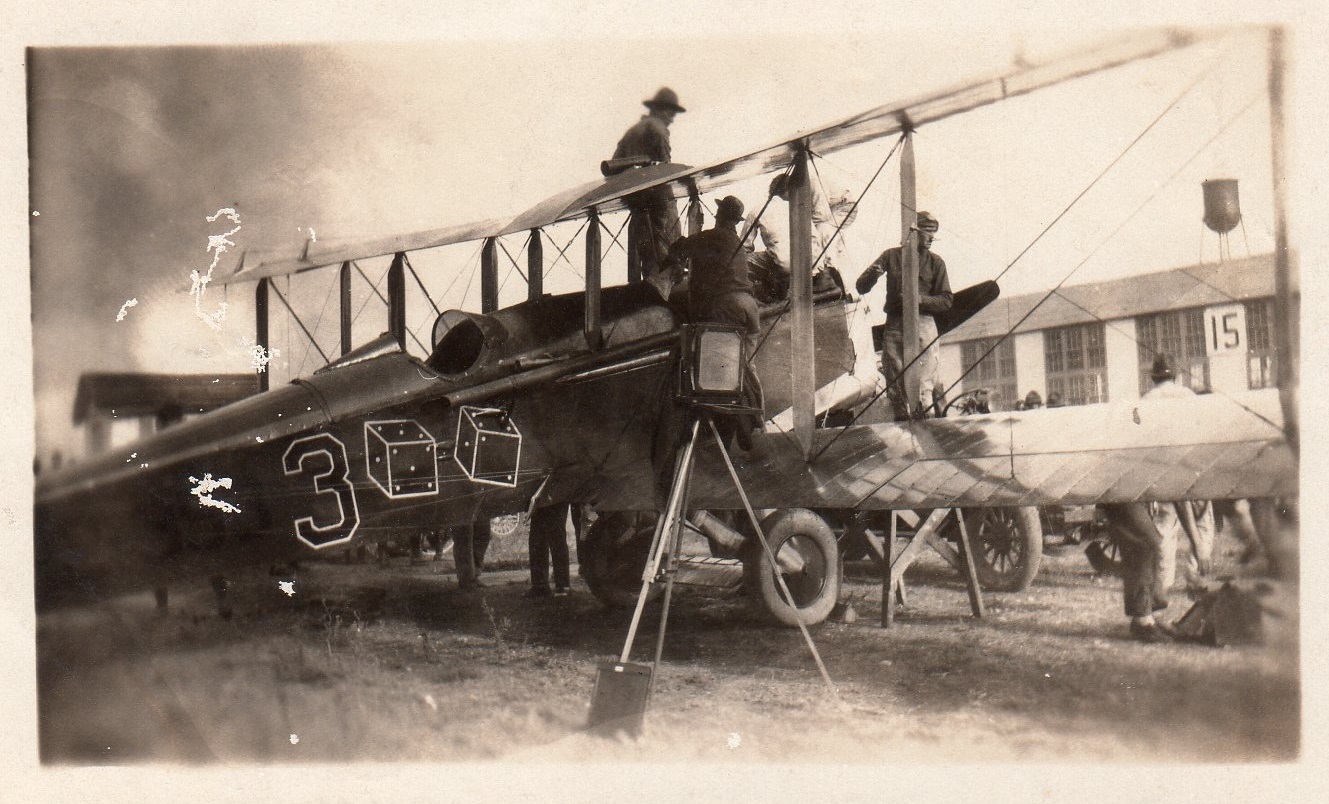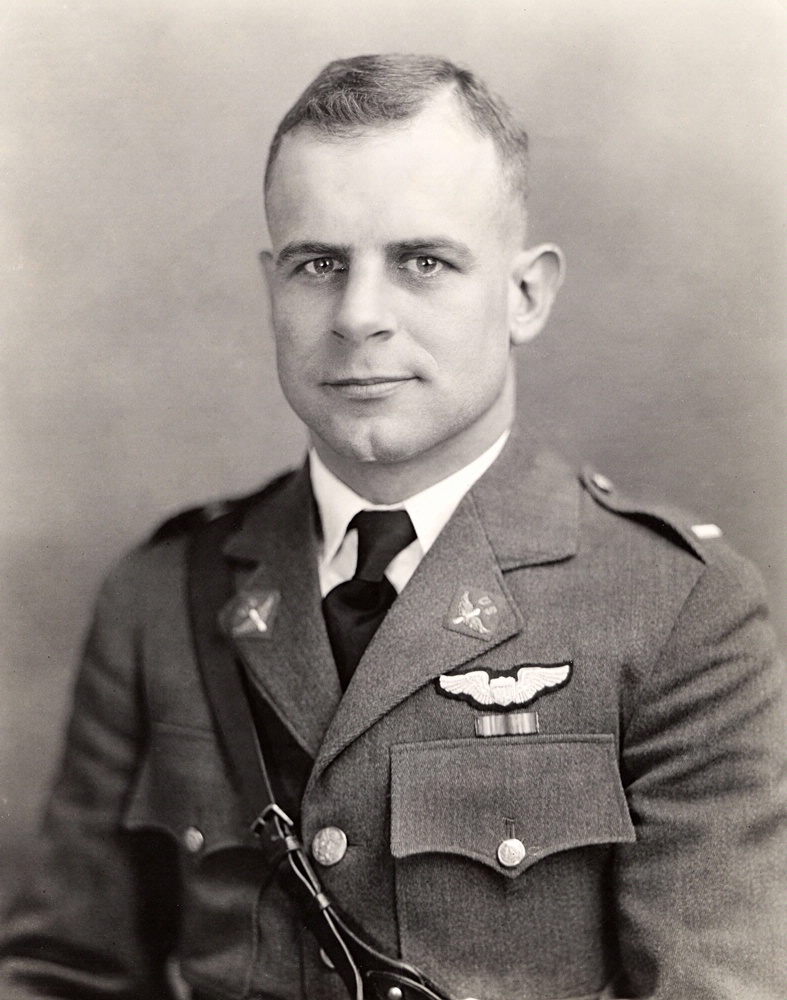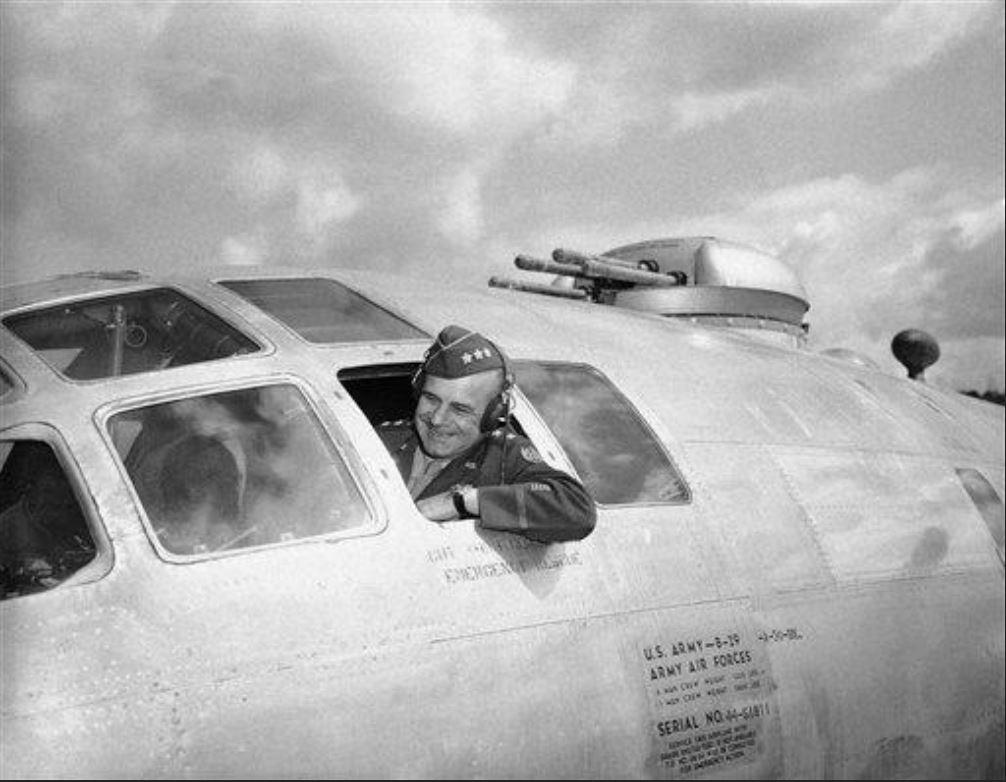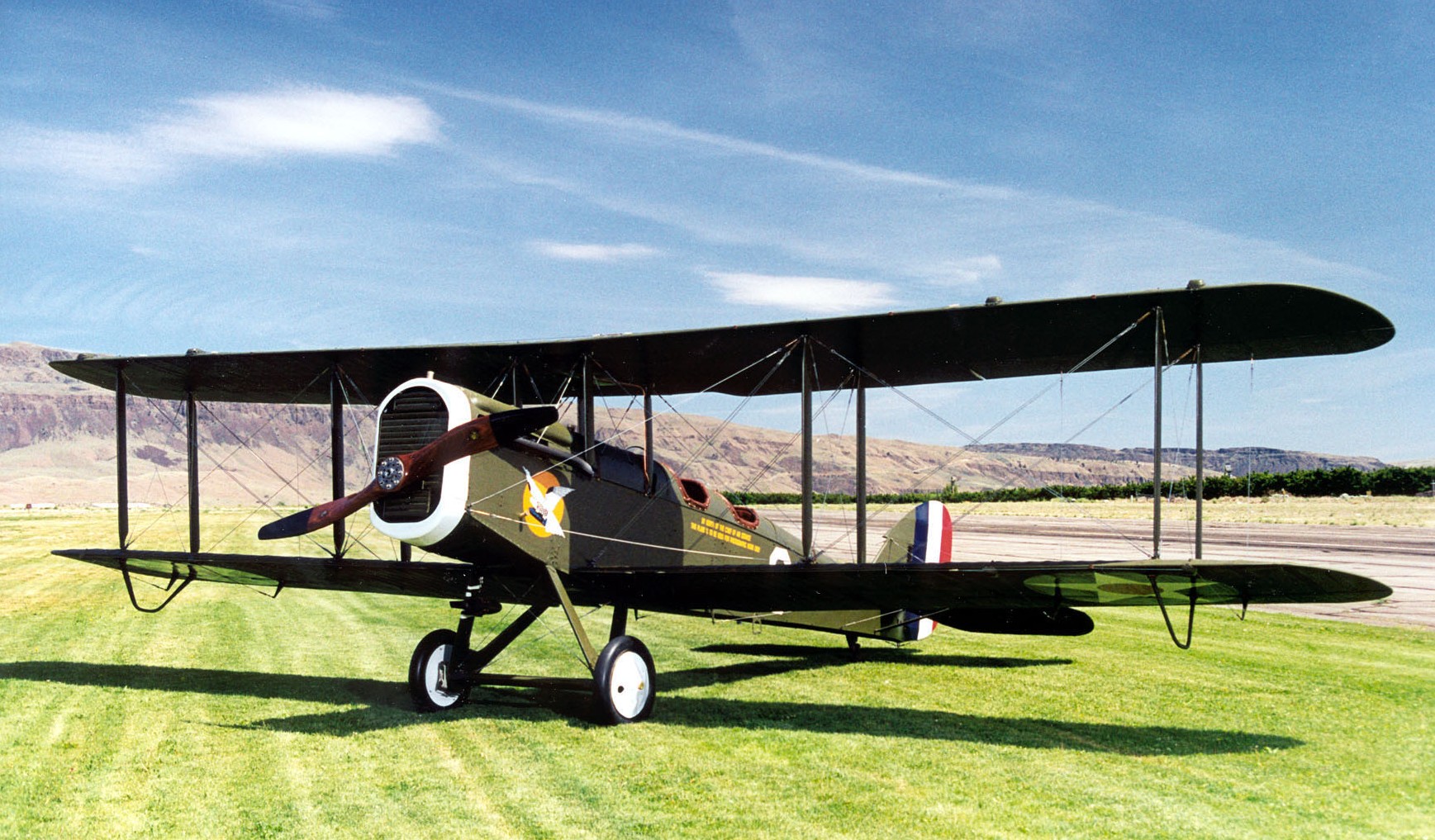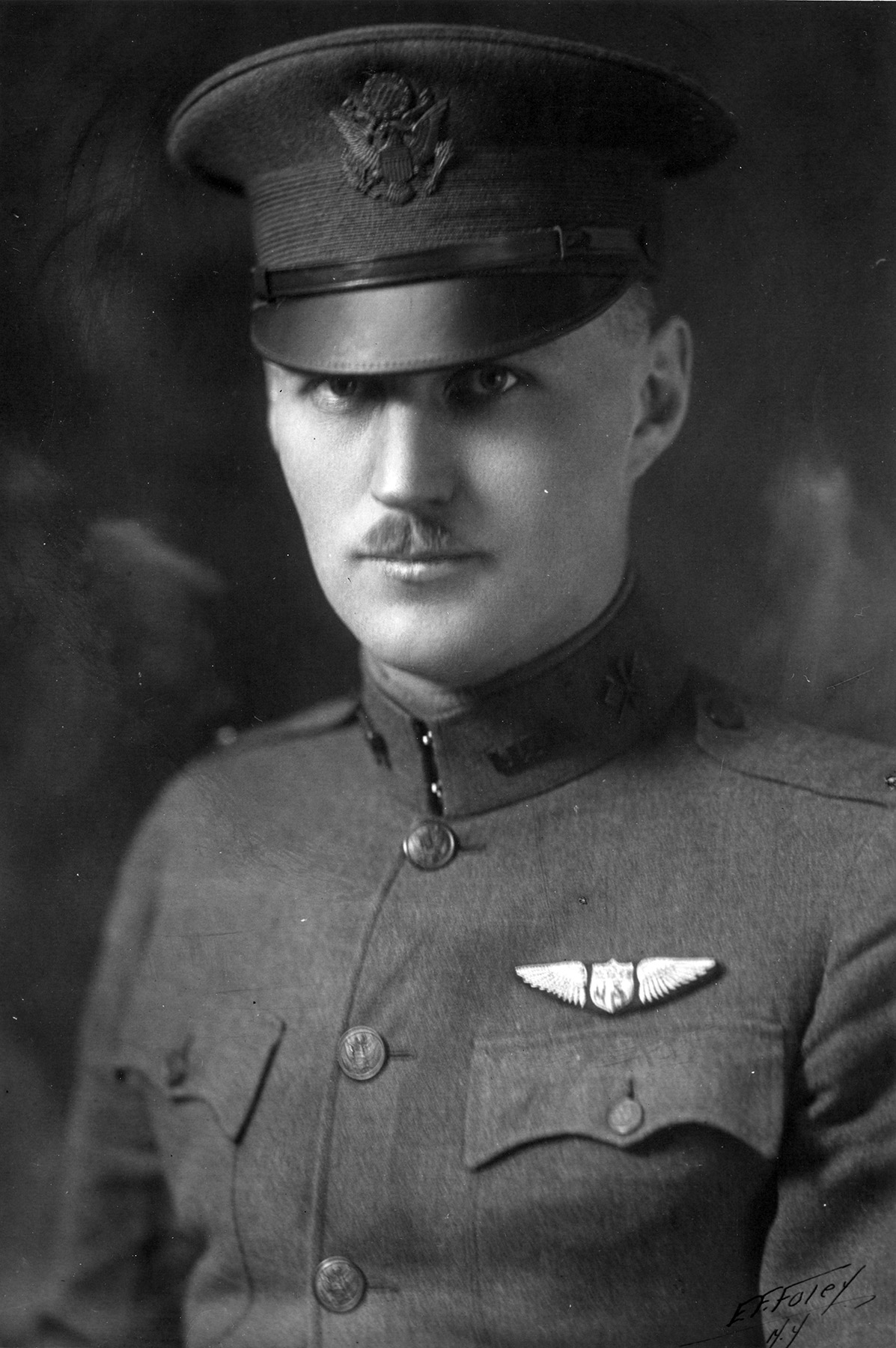
6 October 1918: During the Meuse-Argonne offensive of World War I, approximately 554 soldiers of the 77th “Metropolitan” Division advanced into the Argonne Forest with a French division on their left flank and the American 92nd Division to the right. They moved quickly, unaware that the flanking units were held up. Soon, they were far ahead of the Allied advance and became cut off behind the German lines. With higher ground to all sides, the elements of the 307th and 308th Infantry Regiments and 306th Machine Gun Battalion came under heavy attack by enemy infantry and artillery.
With their communications cut off, they were soon low on food and ammunition. The only water available was a nearby stream that was protected by German gunfire.
Major General Robert Alexander, commanding the 77th Division, requested that the 50th Aero Squadron, based at Remicourt, attempt to locate the cut-off unit and resupply them by air. Among the officers of the 50th participating in the search were First Lieutenant Harold Ernest (“Dad”) Goettler, the 1st Flight commander, and Second Lieutenant Erwin Russell Bleckley, flying an American-built Liberty-engined DH-4. On their first flight they flew their own aircraft, squadron number 2. Later in the day, after #2 developed engine trouble, they used another crew’s #6.
Medal of Honor
Harold Ernest Goettler
Rank and organization: First Lieutenant, pilot, U.S. Air Service, 50th Aero Squadron, Air Service.
Place and date: Near Binarville, France, October 6, 1918.
Entered service at: Chicago, Ill. Born: July 21, 1890, Chicago, Ill.
G.O. No.: 56, W.D., 1922.
Citation: 1st. Lt. Goettler, with his observer, 2d Lt. Erwin R. Bleckley, 130th Field Artillery, left the airdrome late in the afternoon on their second trip to drop supplies to a battalion of the 77th Division which had been cut off by the enemy in the Argonne Forest. Having been subjected on the first trip to violent fire from the enemy, they attempted on the second trip to come still lower in order to get the packages even more precisely on the designated spot. In the course of this mission the plane was brought down by enemy rifle and machinegun fire from the ground, resulting in the instant death of 1st. Lt. Goettler. In attempting and performing this mission 1st. Lt. Goettler showed the highest possible contempt of personal danger, devotion to duty, courage and valor.
*************
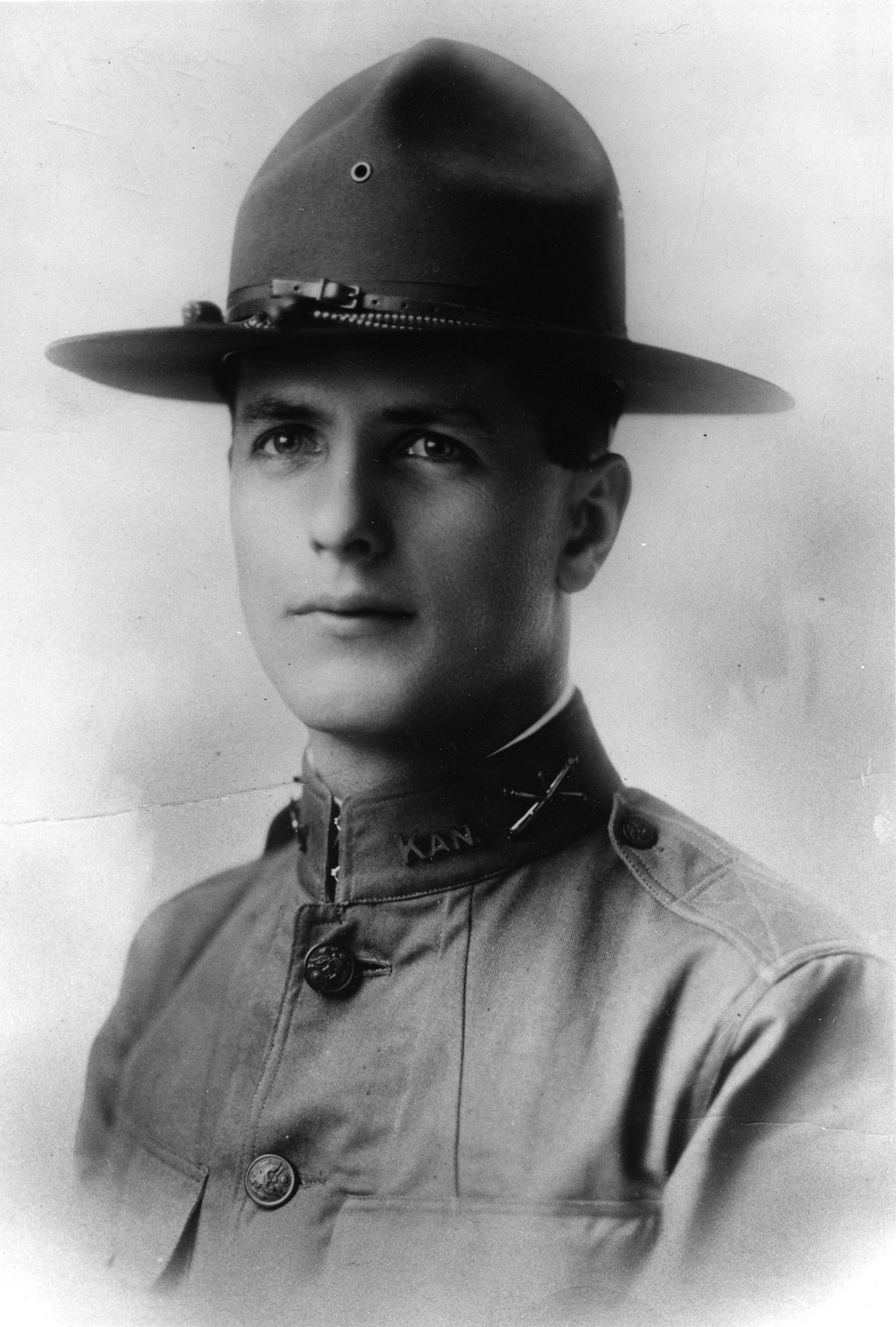
Medal of Honor
Erwin Russell Bleckley
Rank and organization: Second Lieutenant, 130th Field Artillery, observer 50th Aero Squadron, Air Service.
Place and date: Near Binarville, France, October 6, 1918.
Entered service at: Wichita, Kans. Birth: Wichita, Kans.
G.O. No.: 56, W.D., 1922.
Citation: 2d Lt. Bleckley, with his pilot, 1st Lt. Harold E. Goettler, Air Service, left the airdrome late in the afternoon on their second trip to drop supplies to a battalion of the 77th Division, which had been cut off by the enemy in the Argonne Forest. Having been subjected on the first trip to violent fire from the enemy, they attempted on the second trip to come still lower in order to get the packages even more precisely on the designated spot. In the course of his mission the plane was brought down by enemy rifle and machinegun fire from the ground, resulting in fatal wounds to 2d Lt. Bleckley, who died before he could be taken to a hospital. In attempting and performing this mission 2d Lt. Bleckley showed the highest possible contempt of personal danger, devotion to duty, courage, and valor.
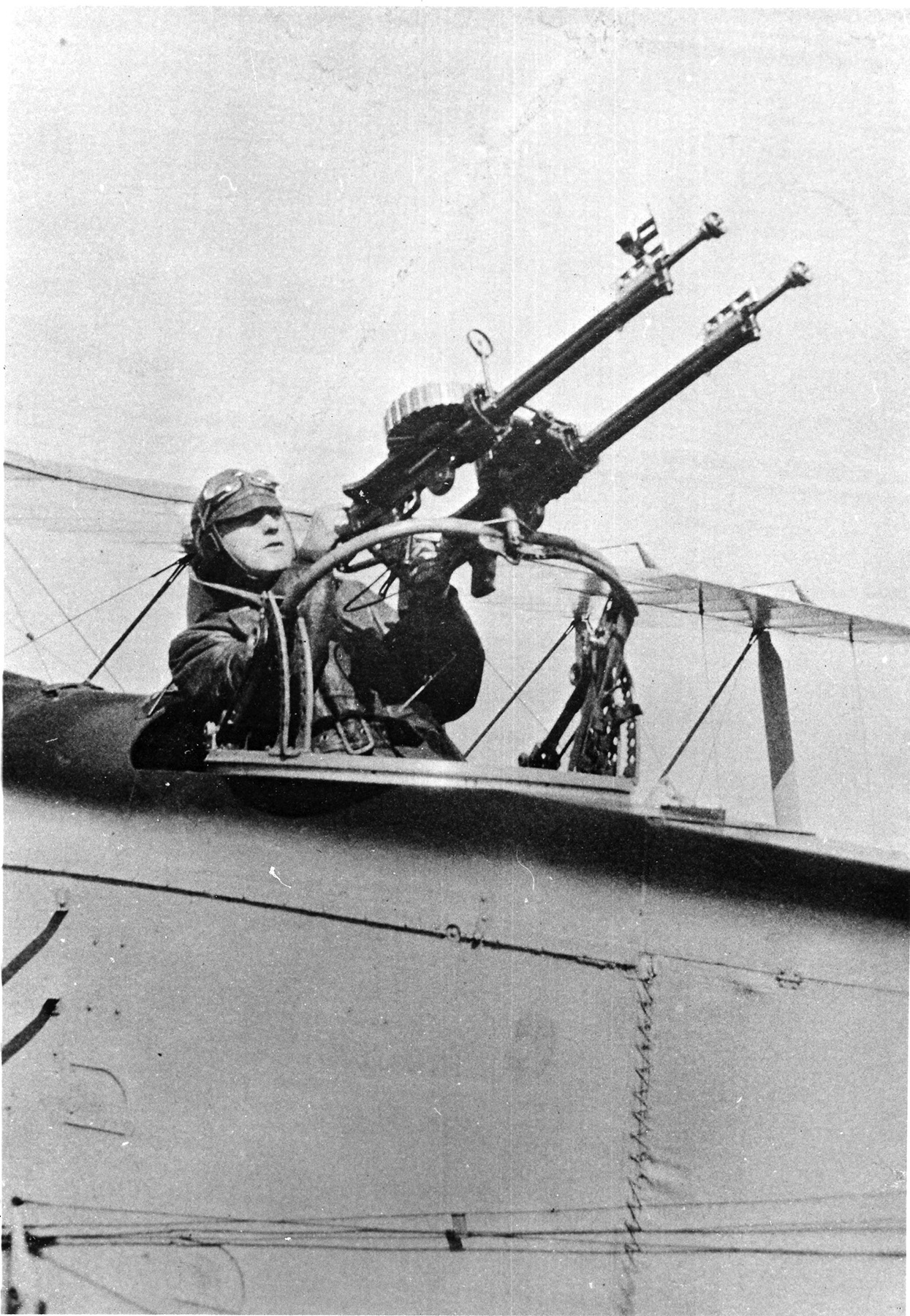
“The Lost Battalion” was finally relieved on the afternoon of 8 October. Of the estimated 554 soldiers who entered the forest on 2 October, approximately 197 were killed and 150 were either missing or captured.
In addition to the Medals of Honor awarded to Lieutenants Goettler and Bleckley, four officers and enlisted men received the Medal. Twenty-eight others were awarded the Distinguished Service Cross.
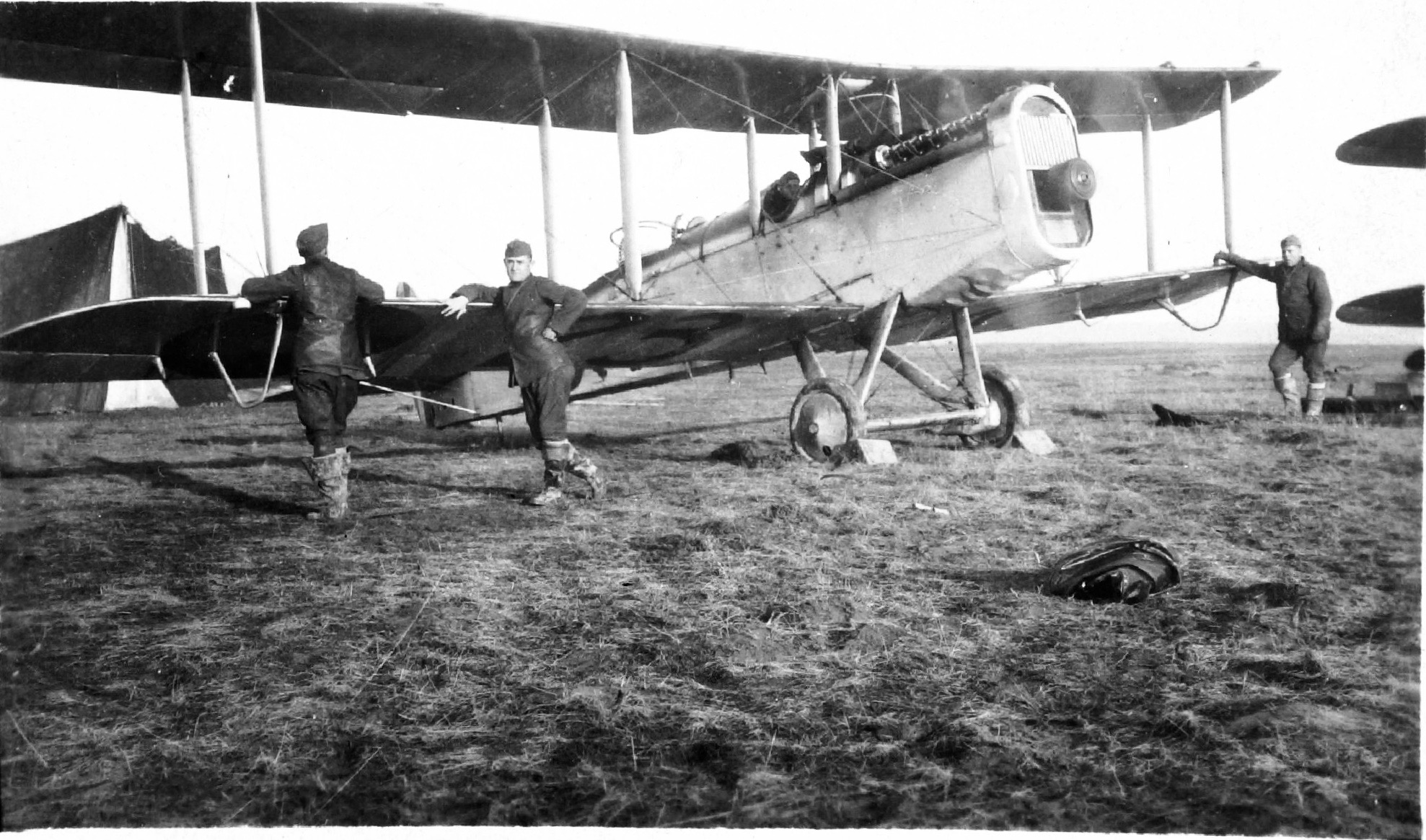
The Airco DH.4 was a very successful airplane of World War I, designed by Geoffrey de Havilland. The DH.4 (DH-4 in American service) was a two-place, single-engine, two-bay biplane with fixed landing gear. The fuselage and wings were constructed of wood and covered with doped-fabric. The airplane was produced by several manufacturers in Europe and the United States. The DH-4 was 30 feet, 5 inches (9.271 meters) long with a wingspan of 42 feet, 8 inches (13.005 meters) and height of 10 feet, 6 inches (3.200 meters). The DH-4 had an empty weight of 2,391 pounds, (1,085 kilograms) and gross weight of 4,297 pounds (1,949 kilograms). Fuel capacity was 67 gallons (254 liters).
Army Air Service DH-4s were powered by Liberty 12 aircraft engines in place of the Rolls-Royce Eagle VII V-12 of the British-built DH.4 version. The L-12 was water-cooled, normally-aspirated, 1,649.34-cubic-inch-displacement (27.028 liter), single overhead cam (SOHC) 45° V-12 engine. It produced 408 horsepower at 1,800 r.p.m. The L-12 as a right-hand tractor, direct-drive engine and it turned turned a two-bladed fixed-pitch wooden propeller. The Liberty 12 was 67.375 inches (1.711 meters) long, 27.0 inches (0.686 meters) wide, and 41.5 inches (1.054 meters) high. It weighed 844 pounds (383 kilograms).
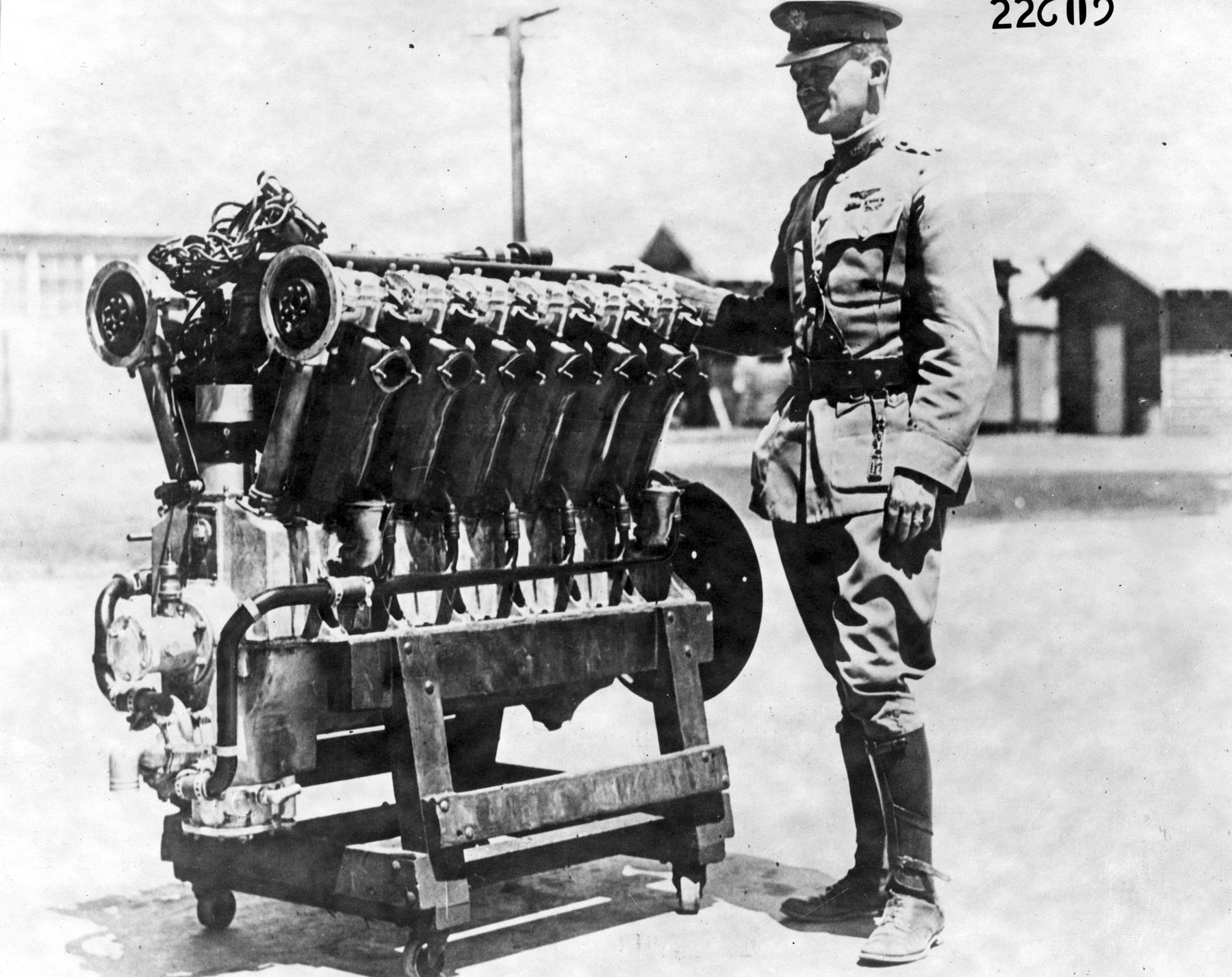
The Liberty 12 aircraft engine was designed by Jesse G. Vincent of the Packard Motor Car Company and Elbert J. Hall of the Hall-Scott Motor Company. This engine was produced by Ford Motor Company, as well as the Buick and Cadillac Divisions of General Motors, The Lincoln Motor Company (which was formed by Henry Leland, the former manager of Cadillac, specifically to manufacture these aircraft engines), Marmon Motor Car Company and the Packard Motor Car Company. Hall-Scott was too small to produce engines in the numbers required.
The DH-4 had a maximum speed of 124 miles per hour (200 kilometers per hour), service ceiling of 19,600 feet (5,974 meters) and range of 400 miles (644 kilometers).
Many DH-4s were rebuilt as DH-4Bs. These can be identified by the relocated pilot’s cockpit, which was moved aft, closer to the observer’s position. The an enlarged fuel tank was place ahead of the pilot’s cockpit. Following World War II, many were rebuilt with tubular metal frames for the fuselage, replacing the original wooden structure. These aircraft were redesignated DH-4M.
The prototype American DH-4, Dayton-Wright-built airplane, is in the collection of the Smithsonian Institution National Aviation and Space Museum.
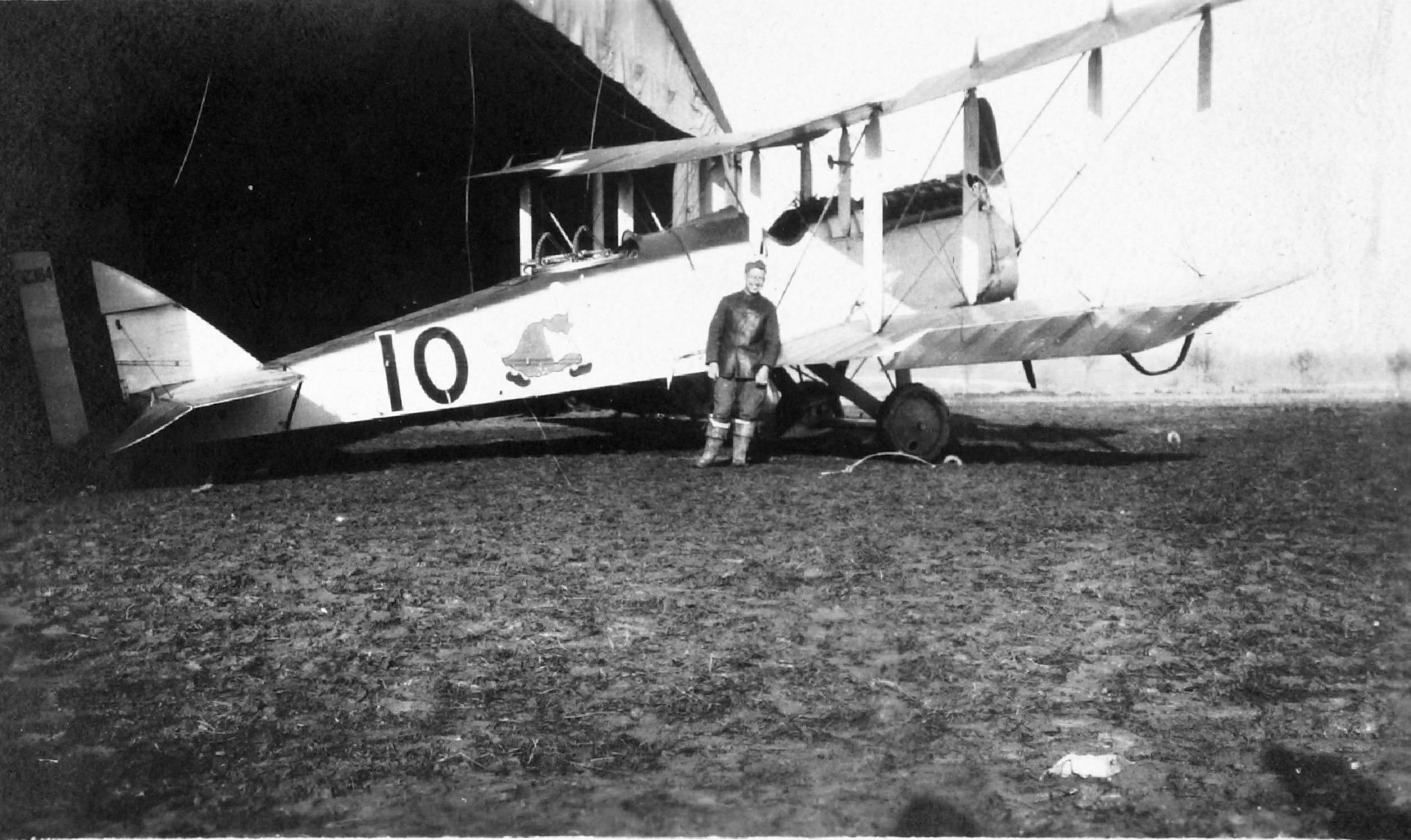
© 2018, Bryan R. Swopes
